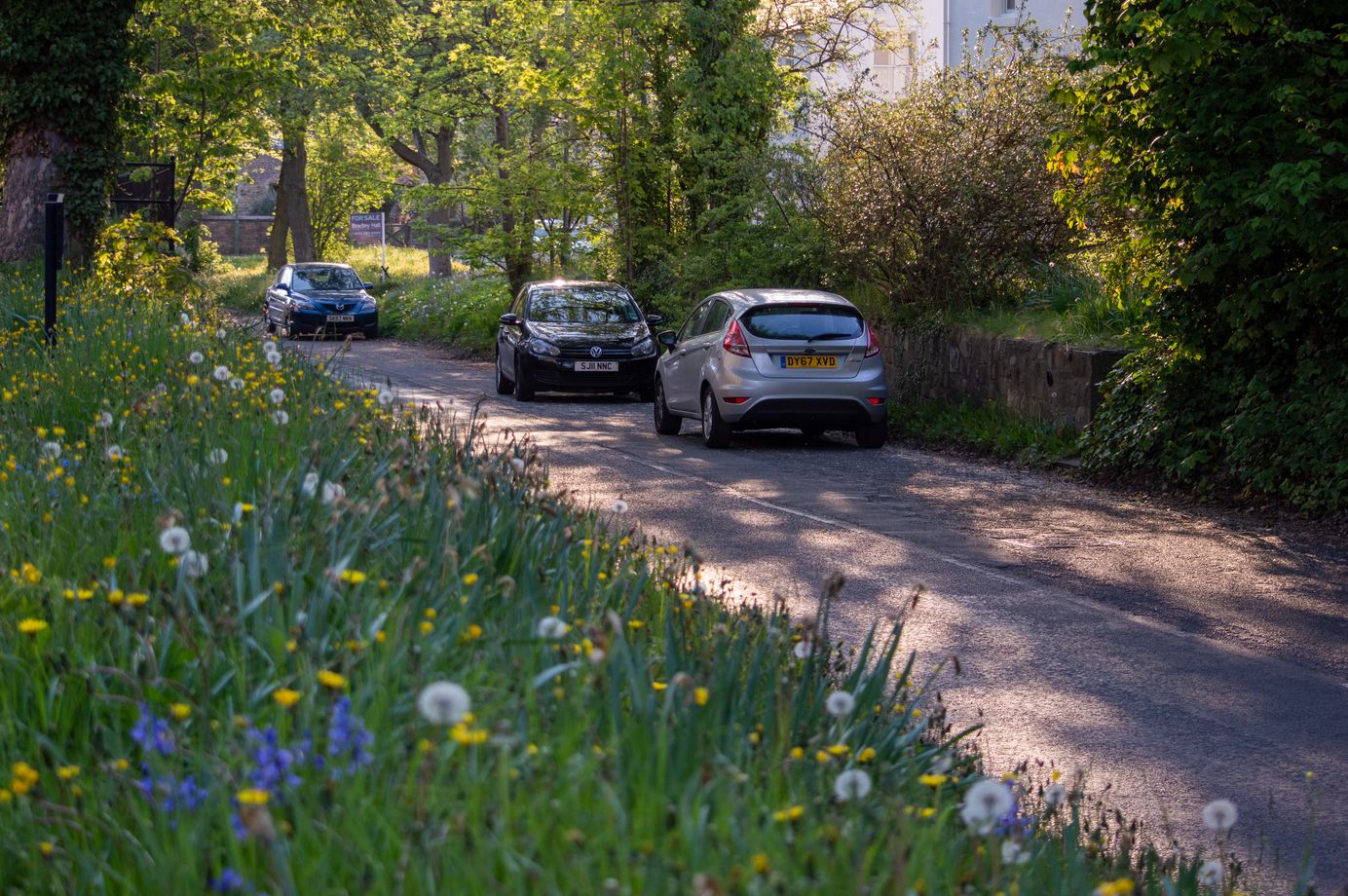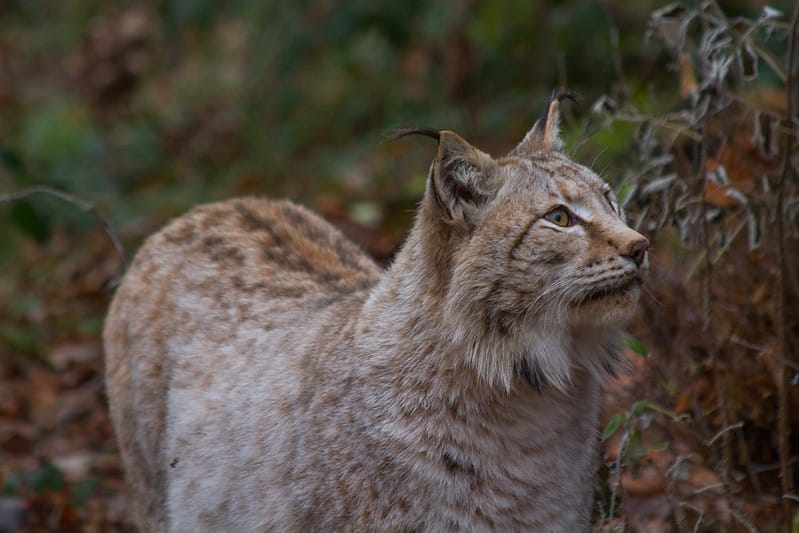
How is your local council managing its roadside verges?
Exclusive: With the right interventions, road verges can become a haven for wildflowers. We asked every council in England for its management regime.
This investigation is the second in a three-part series looking at how local authorities across England are dealing with the nature crisis. The first in the series focused on rewilding.
To support our independent journalism, join up as a paying subscriber. This week, members have exclusive access to the full list of responses that we received from councils.
A flourishing road verge is a thing of beauty: a trove of botanical jewels, a feast of nectar, a burst of colour to brighten tarmac roads.
These underappreciated stretches of grassland are key to recovering Britain’s natural diversity. According to a study published last week, road verges cover 1.2 percent of the land in Great Britain; already, they support almost half of the UK’s wildflower species, including 29 species of orchid. Just as roads allow humans to get from place to place, these adjacent ecosystems provide mammals and insects with safe passage across the country, alongside food and shelter.
But these verges are vulnerable, often falling victim to a drive for tidiness. Regular mowing destroys banks of botanical diversity and razes pollinator habitats. But, with careful management, England’s roadsides could bloom again – the inheritors of the natural wonders that were lost with our historical wildflower meadows as a result of agricultural intensification in the wake of World War Two.
Councils are one of the major players in roadside management: alongside Highways England, they are responsible for most of England’s verges. For the past six months, Inkcap Journal has been investigating how councils are managing this network.
We used a combination of interviews and Freedom of Information requests to uncover the management regimes of every county council and unitary authority in the country. We wanted to know when and how often they were cutting their road verges; how much they were spending; and whether their management regimes had changed in recent years. This is what we found.
Mowing regimes
The biodiversity of England’s road verges will depend on how they are managed – in particular, how often and when the grass is cut.
These verges essentially act as mini-meadows, depending on human intervention for their annual displays of colour. Cutting too regularly will prevent wildflowers from setting seed; equally, never cutting will smother species diversity by allowing coarser plants to take hold. Counterintuitively, wildflowers prefer to grow in nutrient-poor soil, which is achieved by cutting and removing the clippings.
In 2019, Plantlife published its Good Verge Guide, setting out detailed guidelines on how to enhance biodiversity along the UK’s roadsides. While it contains tailored advice for specific habitats, its overriding message is that, to maximise species diversity and avoid disturbing ground-nesting birds, cutting should be left as late as possible: an ideal regime includes a first cut between mid-July and the end of September, with one additional cut before Christmas.
We asked all councils how often they cut their rural verges and when these cuts take place. Of the 81 councils who responded to this question, 53 were cutting their rural verges either once or twice per year; only 10 councils cut their verges more than four times per year. (Some councils provided a range, so the exact numbers for each council may vary year-on-year.)
These responses seemed promising; however, most councils began cutting their rural verges too early in the year. From the 68 councils who responded with specific details of their regimes, at least 35 were cutting throughout May – despite a high-profile campaign by Plantlife to prevent this – with many starting to tackle their verges in April.
Only nine councils (Buckingham, Hertfordshire, Middlesbrough, Sheffield, October, Redbridge, Wakefield, Wokingham, West Berkshire and West Sussex) delayed road verge cutting until July or later. Hartlepool, Havering, Hillingdon, Rutland and North Yorkshire also followed Plantlife’s guidelines by cutting earlier in the year, before wildflowers have had a chance to set seed.
The following map shows when and how often councils are mowing their rural road verges. Darker shades of red represent more regular mowing.
In urban areas, road verges often perform a different function, with councils having to balance the needs of residents and wildlife. But as Plantlife points out in its Good Verge Guide, short grass doesn’t have to be sterile: ankle-length lawns can support species such as clovers, trefoils, dandelions, selfheal, buttercups and yarrow. To achieve this, Plantlife recommends cutting once every four weeks to a height of around 3-6cm.
There was a huge range of approaches among councils when it came to managing urban road verges: some clearly saw them as an opportunity to bring nature into towns and cities, while others were focused on keeping the grass as short as possible. More than two thirds of the councils who responded admitted to cutting more than once a month – and that figure may be higher, given that some councils were vague about their schedules.
The following map shows council mowing regimes for urban verges. Again, darker shades of red represent more regular mowing.
One objection to tall grass on road verges is safety: motorists need sightlines to be clear around junctions, corners and roundabouts. But this needn’t be an obstacle to broader improvements across the network. Many councils stressed that they mow essential areas when needed, while leaving the rest of their grassy verges to develop throughout the summer months.
It’s worth noting that these figures may not tell the full story: some councils outsource some of their verge management to district and parish councils, who have the option to undertake additional management. For some areas, this may enhance biodiversity; in Lancashire, for instance, the county council is working with district councils to sow wildflowers. In other areas, district and parish councils may choose to undertake additional cuts, on top of those funded by the upper tier council, at their own expense.
Conservation areas
Mowing regimes determine the overall health of the road verge network. On top of this, some councils maintain specific conservation areas, where the grassland is maintained to a particularly high ecological standard.
In an ideal world, every verge would already be bursting with wildlife and such areas wouldn’t be necessary. But given that many councils still cut too regularly or too early, these special areas can make a valuable contribution to roadside diversity.
The following map shows which councils are maintaining conservation areas within their networks of road verges. Some 78 councils – over half of the 148 councils questioned – maintained some sort of conservation area (green), with another six planning to establish areas in the near future (yellow). A further 36 councils had no existing or planned conservation areas (red). The remainder (purple) did not provide any information about conservation areas, either positive or negative.
Click on the map to read a summary of each area; we have published the councils' full responses here.
Some efforts to establish conservation areas were fairly rudimentary, differing little from the council’s wider verge management. A few councils focused on aesthetic impact rather than value to wildlife, sowing seeds that provide a “good visual display”, in the words of Bristol Council, rather than establishing assemblages of native species – an approach that is not always welcomed by botanists.
But other councils had clearly thought deeply about the best ways to establish roadside meadows. Here are some of the highlights:
- Suffolk has over 100 designated roadside nature reserves, each with a bespoke cutting regime to suit the plants at the site. Similarly, Worcestershire has 37 roadside nature reserves; Norfolk has 111.
- West Sussex has 84 Notable Road Verges, covering 51km, that the council has been monitoring for almost 50 years.
- Three councils (Southampton, Cornwall and Rotherham) had special regimes in place to protect sites with bee orchids.
- Northumberland has identified 80 sites of botanical interest where cutting is delayed until September, with signs erected to explain the initiative.
- Kent has changed the management of a 70km stretch of road verge on New Romney Marsh, and is undertaking a three-year monitoring effort to measure the impacts on pollinators.
Budgets
As part of this investigation, we asked councils how much they spend on managing their road verges.
However, it was difficult to get meaningful data: some councils only provided information on general grounds maintenance (including parks, for instance), and only a handful had separate budgets for rural and urban verge management.
Nor is the sum necessarily indicative of the ecological quality of management: fewer annual cuts may reduce spending, while drawing up individual management plans for conservation areas, for instance, may increase it – and councils were rarely willing or able to provide detailed breakdowns of their budgets. Some councils spent more simply because they maintained a larger network of verges.
However, a small number of councils did provide details of their budgets for the management of both rural and urban areas. For those that also provided details of the area of road verges that they managed, we calculated the money spent per square metre of verge. (Where councils provided a length, rather than an area, we assumed a cut of one metre width along the roadside to generate comparable data – we’ve indicated the councils for whom we’ve made this conversion with an asterisk.)
This is, of course, just a snapshot of what councils are spending on managing their road verges, but it highlights how councils might make savings by relaxing their mowing regimes, particularly in urban areas where spending is generally much higher.
We excluded Tower Hamlets from this graph because its costs were so high that it rendered all other areas invisible by comparison. The borough spends £10,000 per year to maintain 0.12 miles of grass verge – roughly £52 per square metre – which it mows every 14 days between April and October. Tower Hamlets is also London’s poorest borough, which raises the question of whether a fortnightly war on wildflowers is the best use of this money.
What is more telling is whether councils have changed their budgets as they altered their verge management regimes. We asked all councils about changes over the last five years – and 13 responded that they had reduced their spending on road verges, in some cases by hundreds of thousands of pounds.
For some councils, the budget reduction came first, forcing a reduced mowing schedule. Sheffield said that its changes were prompted by cost savings, but that “the benefits, although not fully quantified, are greater biodiversity, including an increase in the number and species of wildflowers.” Other councils saved money as a result of choosing to reduce the number of annual cuts; Norfolk, for instance, is saving £100,000 this year by mowing its urban verges four times instead of five.
Just four councils reported an increase in spending on road verges. In three cases, these were connected to environmental improvements – Rotherham, for instance, has engaged an ecologist to review its cutting regime.
Consulting with ecological experts is another sign that councils are serious about road verge management. Some 75 councils said that they had either consulted with an ecologist or NGO – most commonly Plantlife or the local Wildlife Trust – or had in-house expertise. There were 41 councils that had not consulted with any ecologists or NGOs.
Changes
Public pressure over road verge management has ramped up in recent years, largely thanks to Plantlife, which has been campaigning for wilder road verges since 2013. Where tidiness was once seen as a mark of civic pride, plastic lawns and shorn roadsides are now reviled by conservationists and many members of the public. To assess whether this message had filtered down to councils, we asked what changes they had made over the past five years.
At least 35 councils responded that they had reduced their number of annual cuts; a handful of others had introduced new wildflower projects or had increased the number of conservation areas. Manchester was the sole council to change the height to which they mowed the grass; Birmingham mentioned that it had reduced the number of cuts after buying new equipment that could deal with longer grass. Only one council – Barnsley – reported that it had increased the number of cuts, from two to four times per year.
In a few cases, councils reported that they had made changes in response to public pressure – both positive and negative. Lambeth is trialling a new management regime on one road at the request of residents; Worcestershire has become a “pollinator-friendly county” following a shift in complaints from members of the public:
“Complaints had historically been related to us not cutting enough and the verges looking untidy – complaints were now much more geared to overcutting and loss of habitat. The system that we have implemented ensures that the highway is safe to use but also allows the verges to be managed with a keen eye on biodiversity, pollinators and habitat.”
Wokingham was the sole council to reverse nature-friendly measures in response to public complaints. In 2016, the council decided to leave a number of verges uncut to increase biodiversity. “While this received some positive responses, there was a large number of complaints which resulted in the cutting schedule returning the following year to a regular cut on our urban verges with some long grass areas remaining in our parks,” the council said.
The following graphic shows a sample of some of the changes that councils are making across the country; the full list of responses is available here.
The future
Whether it’s a response to public pressure, aesthetic preferences or budget cuts, it’s clear that many councils are striving to create more beautiful roadside verges. Progress has been patchy – some councils are leaps and bounds ahead of others – but the trend is clear: Britain's roadsides are becoming wilder.
What is also clear is the impact of campaigning; for instance, nine councils explicitly mentioned Plantlife’s Good Verge Guide as a blueprint to best practice.
This investigation also leaves some open questions. We have not, for instance, covered the use of herbicides. Just one council volunteered information about their use of chemicals to control plants: Worcestershire said that it has been forced to use spot treatments on sites where ragwort has sprung up – “a direct response to our managing for pollinator species” – after being served notice by Defra in October 2020.
In addition, councils were rarely able or willing to provide precise information about the areas of road verges that they manage, or the spatial extent of their special conservation areas. Nor was it clear how many areas were receiving additional cuts by district and parish councils. This information would help to build a more comprehensive picture of the state of Britain’s road verges, and what areas to target when campaigning for better management.
Now is the time to appreciate and protect our road verges. We have just entered the month of June, and wildflowers are approaching their finest hour. Councils must do their utmost to ensure that they remain a joy forever.
With additional reporting by Coreen Grant.

Subscribe to our newsletter
Members receive our premium weekly digest of nature news from across Britain.
Comments
Sign in or become a Inkcap Journal member to join the conversation.
Just enter your email below to get a log in link.








